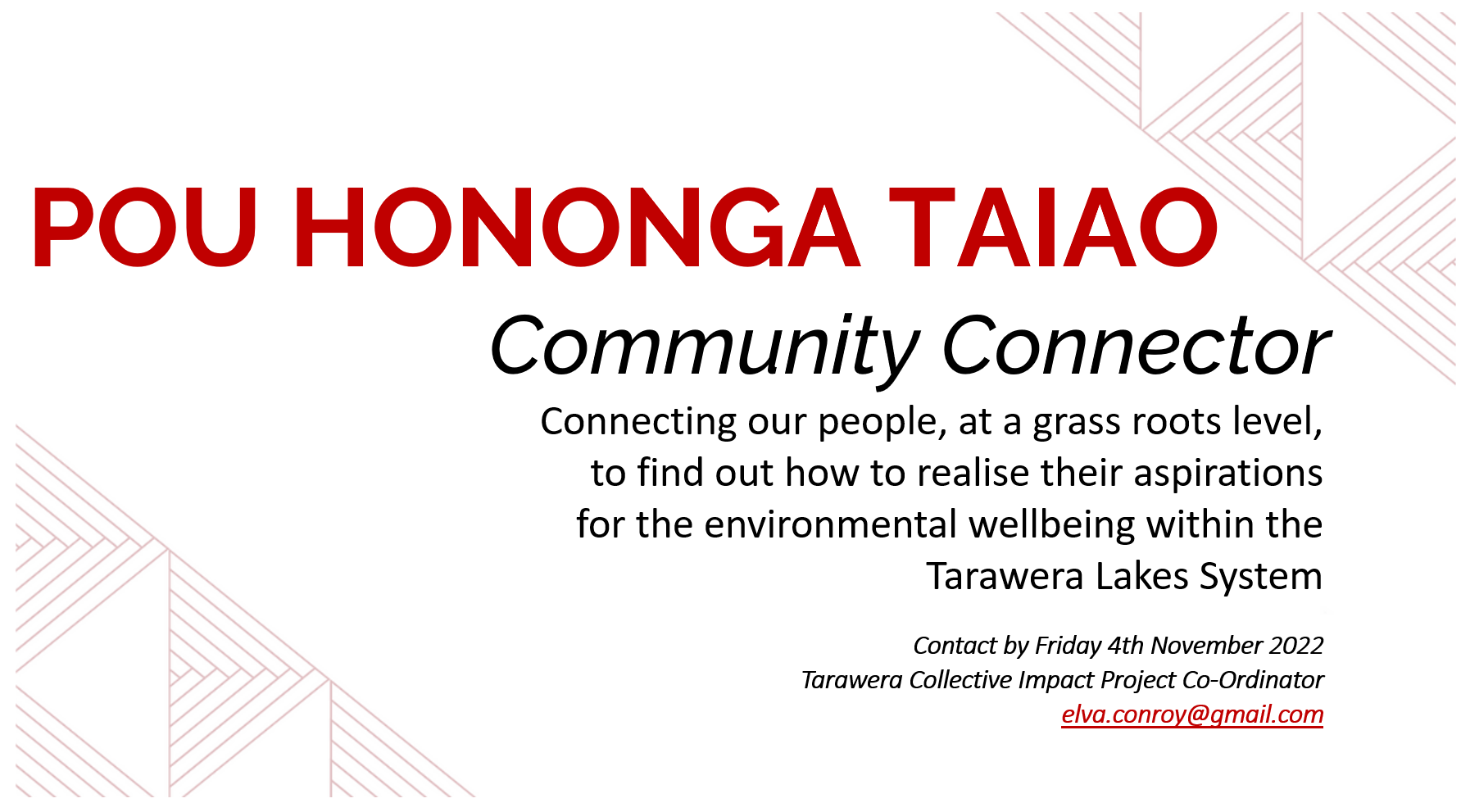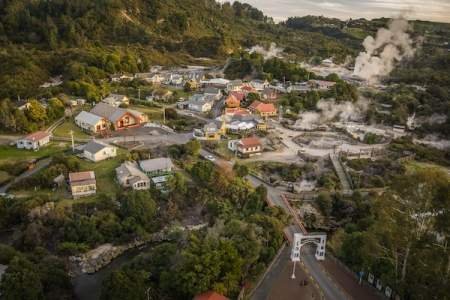#OurPeople: Margaret Courtney and the role of the Māori Land Court
A highlight on Tūhourangi uri, Margaret Courtney, Masters of Laws and the role of the Māori Land Court in contemporary Aotearoa
The Māori Land Court of New Zealand has and continues to play a unique role within the justice system. Often referred to as the “people’s court,” the Māori Land Court functions to promote the retention of and appropriate use of Māori land.
There is, however, little research to understand the role that the Māori Land Court plays in modern Aotearoa New Zealand, something which has motivated Master of Laws student, Margaret Courtney, to pursue research in this area.
Courtney (Tūhourangi-Ngāti Wāhiao, Ngāti Whakaue, Tapuika, Ngāti Umutahi) completed a Bachelor of Laws and Masters of Indigenous Studies at Waikato University before completing her Master of Laws with the University of Otago in August of 2022.
“After completing my bachelors, I worked in Hamilton for Housing New Zealand and then for the Māori Land Court before moving home to Rotorua where I continued at the Waiariki Māori Land Court within the same role.
“I really enjoyed the work there. Not only are you helping whānau to work through a court process of whenua reclamation, but you wade through the Court records through generations making whakapapa connections that some never knew existed.
Eager to pursue further study, Margaret began research into how her own whenua had been impacted by the Native Land Court.
“I decided to do my Masters of Indigenous Studies on the Native Land Court, specific to whenua at Tarawera and the systems of how the once bigger Rotomahana Parekārangi block had been divided up and how my whānau became a very small owner. This was both an educational and personal journey for me.”
Today, part of this block of land is located within Te Wairoa Buried Village, a long-standing tourism operation. The village was created by excavation from the 1886 Mt. Tarawera eruption near Rotorua.
Courtney’s tupuna lived and worked at Te Wairoa prior to the 1886 devastation.
“I thought that’s where my learning would stop but then I wanted to get back into the legal way of thinking and writing, and so decided to pursue a Master of Laws.
Margaret’s research centres on the various roles of the Māori Land Court within the contemporary environment, drawing on publicly available material including transcripts and submissions to help determine the roles.
“My interest initially came from wondering why the Māori Land Court was referred to as the ‘people’s court’, then this morphed into questioning its place and role in the modern New Zealand legal system.
“At the beginning of writing my thesis I thought there were only three main functions of the court - adjudication, protection, and facilitation.
“Investigating these three descriptors in a historical and contemporary context found that historically, they were never in the interest of Māori. The protector role represented legislative protection and could be manipulated to enable alienation. The function did not protect cultural connection to the whenua, but rather ensured that there were fair dealings.
“The Native Land Court’s role was seen as paternalistic.
“Since the Te Ture Whenua Māori Act 1993, the meaning of those three roles has shifted to be somewhat in the interest of Māori.
“In contemporary time, the facilitator role is there to facilitate and assist Māori to develop, utilise, and occupy their land as well as facilitating discussion between whānau so they can come to resolutions by themselves.
“The promoter role was found to promote the retention of whenua, whakapapa links and the connection that Māori intrinsically have with their whenua and natural environment.”
Courtney’s research also looks at the perspective of landowners and trusts, digging through and drawing on information through submissions detailing experiences with the Māori Land Court.
“Although the role of the court from a landowner perspective is shaped by their experience of going to the court, there were still similarities between them. Many submissions detailed the importance of the protector role in bringing balance to minority landowners as most often the majority shareholder trumps.”
For Māori, going through mediation and the court process is often a long enduring task that most often systematically pits families, who are linked together by whakapapa, against one another.
“The individualisation of land is a real colonial concept to do with ownership. The Court system was imposed on us and now we are dealing with the ramification of it. Whānau now endure, in some cases, rigorous proceedings.
“Every generation, the shares get smaller and smaller. For some it won’t be worth much in terms of a monetary value but there is still the cultural connection to the whenua that our people seek as a method of reconnection to their identity and where they come from.
In the publication He Pou Herenga Justice Williams said the biggest challenge for the Court is the continued individualisation of titles. He states:613
“… the inevitable consequence of hyper-individualisation, which is the creation of tiny interests with little relevance in the lives of Māori landowners. It makes it hard for communities to maintain a meaningful connection. The nature of ownership system itself made moving forward in a Māori way always very difficult, because it was designed to achieve the opposite effect, of course.”
“The system was imposed on us, and we’ve had to live with it, which is why there needs to be a discussion about the role of the court and whether it continues to be that.
“It’s important that research is and continues to be conducted to uncover how it can continuously evolve into one with the aspirations of whānau at the heart of its design.
“There has been a raft of studies done over many years on Māori land tenure, but the Court still exists in the same format that it always has. There needs to be some type of disruption and innovation to see how best it can move forward if that is the wish of the people.
“The bigger question, therefore, is, can there be change and what a remodel would look like?”
Courtney refers to the work of Otago lecturer Mihiata Pirini (Tūwharetoa, Whakatōhea), who completed her thesis on the Māori Land Court in 2020 after the failed 2017 reforms. She considered a design process incorporating landowners’ participation and views of the court.
The judiciary have also held a long-standing view that empirical research should be undertaken to uncover if the Act is a barrier to Māori land development.
“So, between that design process and understanding the roles of the court, we then need political goodwill and necessary government resourcing to try make innovative change.”
Courtney wishes to acknowledge the support of her supervisors throughout her years at Otago University including Dr Paerau Warbrick, Professor Jacinta Ruru and Dr Bridgette Toy-Cronin.
Tarawera Collective Impact Roles
Te Arawa Lakes Trust are excited to be advertising for a number of positions to help ensure joined up action for the health and wellbeing of Lake Tarawera and its seven contributing lakes.
This team will connect, provide support and pursue opportunities to empower Tarawera Iwi, Māori Land Trusts, landowners and community care groups to implement projects to ensure that the long-term care of the eight lakes reflects Te Arawa values and incorporates cultural monitoring, practices and mātauranga.
The positions are:
Pou Hononga Taiao (Community connector)
These roles are the interface between the Te Arawa Lakes Trust, iwi/hapū, Māori Land Trusts, local communities and organisations. They are focused on connecting with our people, at a grass roots level, to find out how to realise their aspirations for environmental wellbeing within the Tarawera Lakes System.
You will determine where to best focus efforts/actions to enhance the well-being of the Tarawera Lakes System and take steps to resolve gaps in capacity and/or capability to realise these aspirations. The roles will be busy, dynamic and varied.
Depending on the skill sets of candidates, the roles may range from 0.6-1 FTE (24-40 hours per week).
Kairaraunga Taiao (Data Manager)
We are looking for someone who can oversee the collation, analysis and visualisation of data for this project. This will be a busy and varied full-time role, which includes technical support in terms of GIS mapping and science communication.
Whakapā Taiao (Communications Support)
This role is the conduit of information, supporting effective communication with our Iwi, Māori Land Trusts, communities and organisations.
Being knowledgeable on varying methods of engagement is important, as well as the collecting and sharing of information through our many communication pathways.
This is a busy and varied part-time role (12 hours a week).
There is a lot of flexibility within the roles including hours (job sharing is welcome) and office location (e.g., home, Te Arawa Lakes Trust, other Iwi within the Tarawera Lakes System).
To read more about the overarching mahi please read Tarawera Lake System.
If you have any questions, please touch base with one of the team - we're here to help:
Elva Conroy
Tarawera Collective Impact Project Co-Ordinator
elva.conroy@gmail.com
022 070 4652
Ngā Hararei-ā-Kura, school holidays: Tūhourangi Edition
We’ve put together a list of activities for whānau (and everyone) to help with the upcoming school holidays - Tūhourangi edition!
The places mentioned in our list are either:
on Tūhourangi whenua (lands)
have businesses owned by Tūhourangi uri (descendants) on them
are owned by Tūhourangi Tribal Authority - therefore, free for Tūhourangi uri to visit!
For further details please DM on our Facebook or instagram or contact admin@tuhourangi.iwi.nz
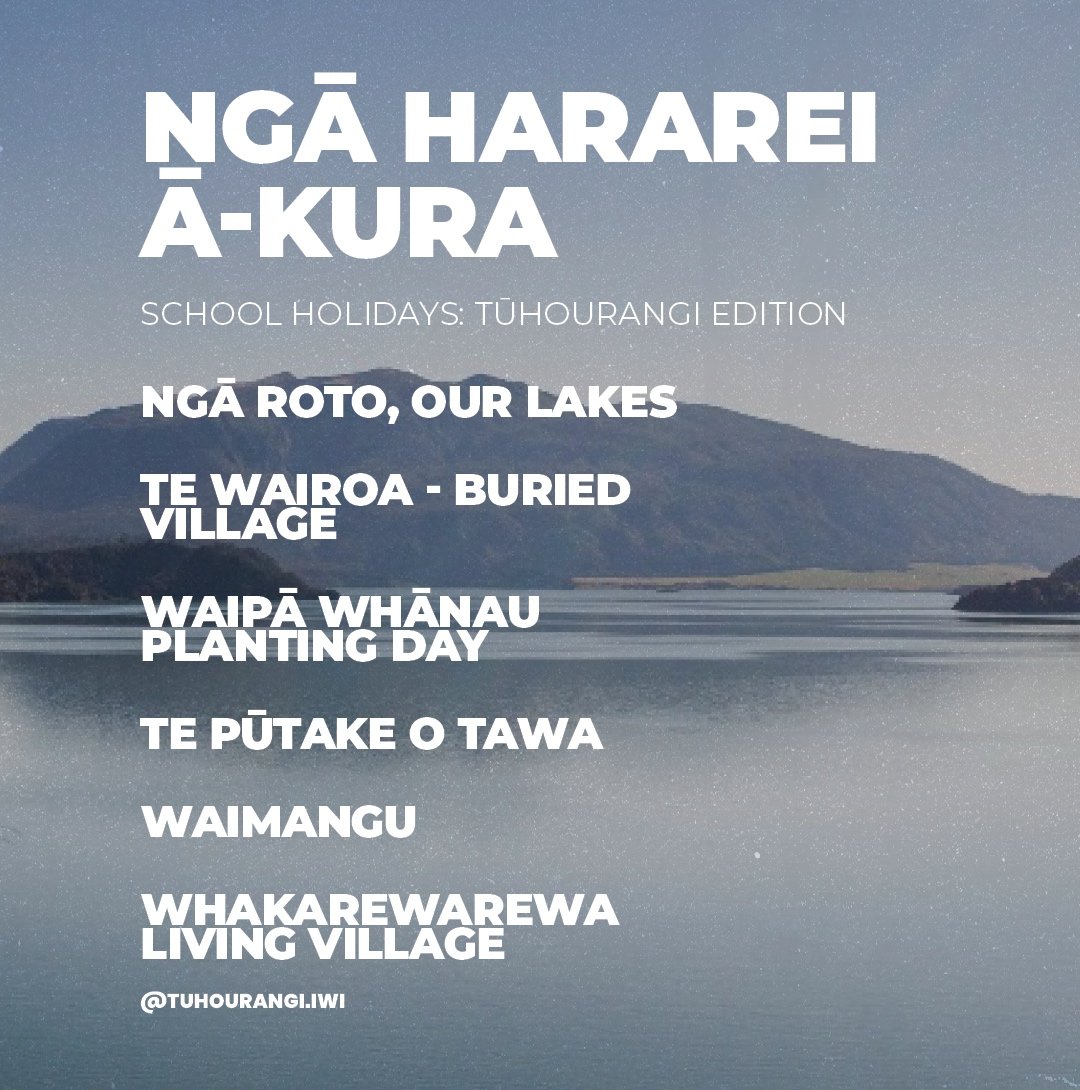



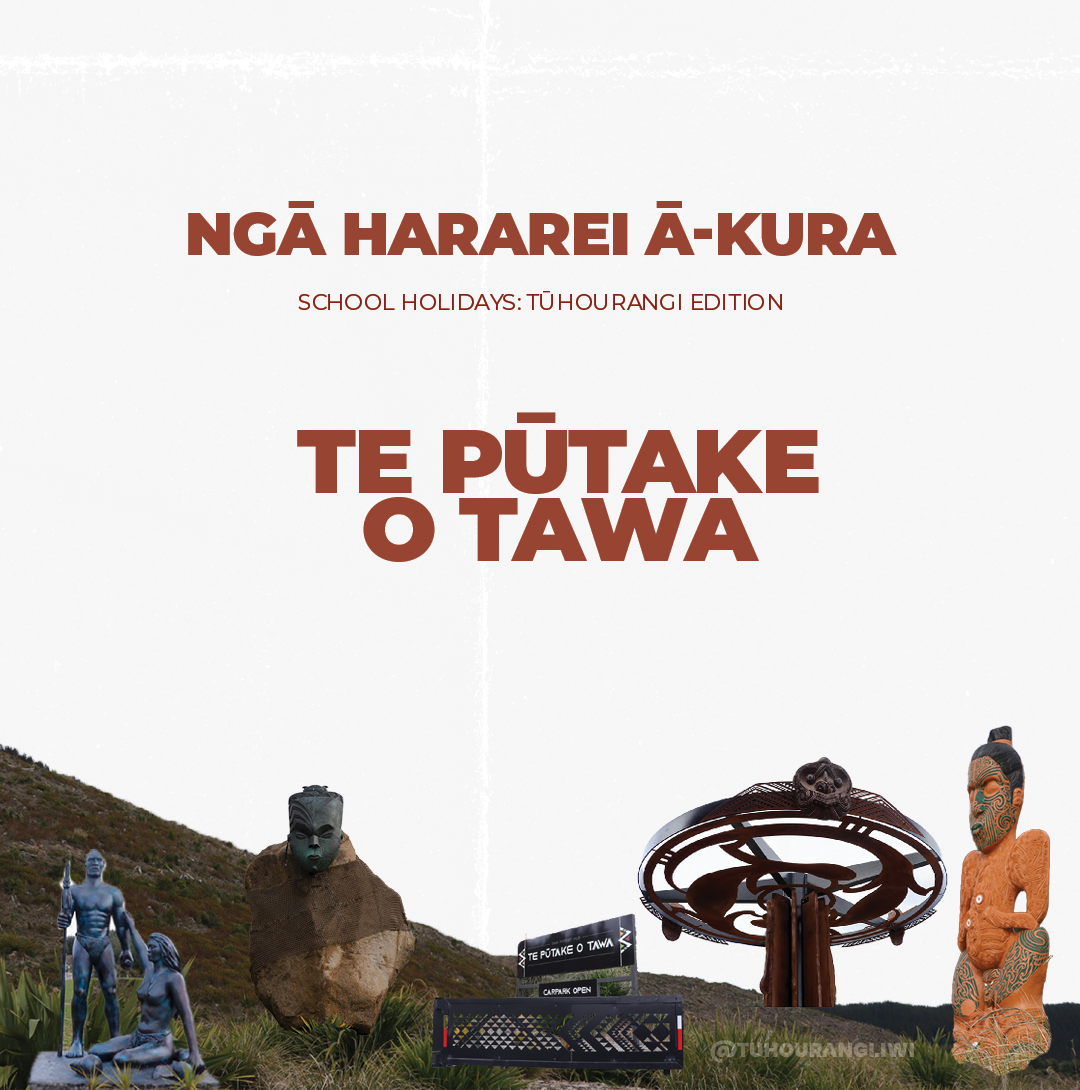

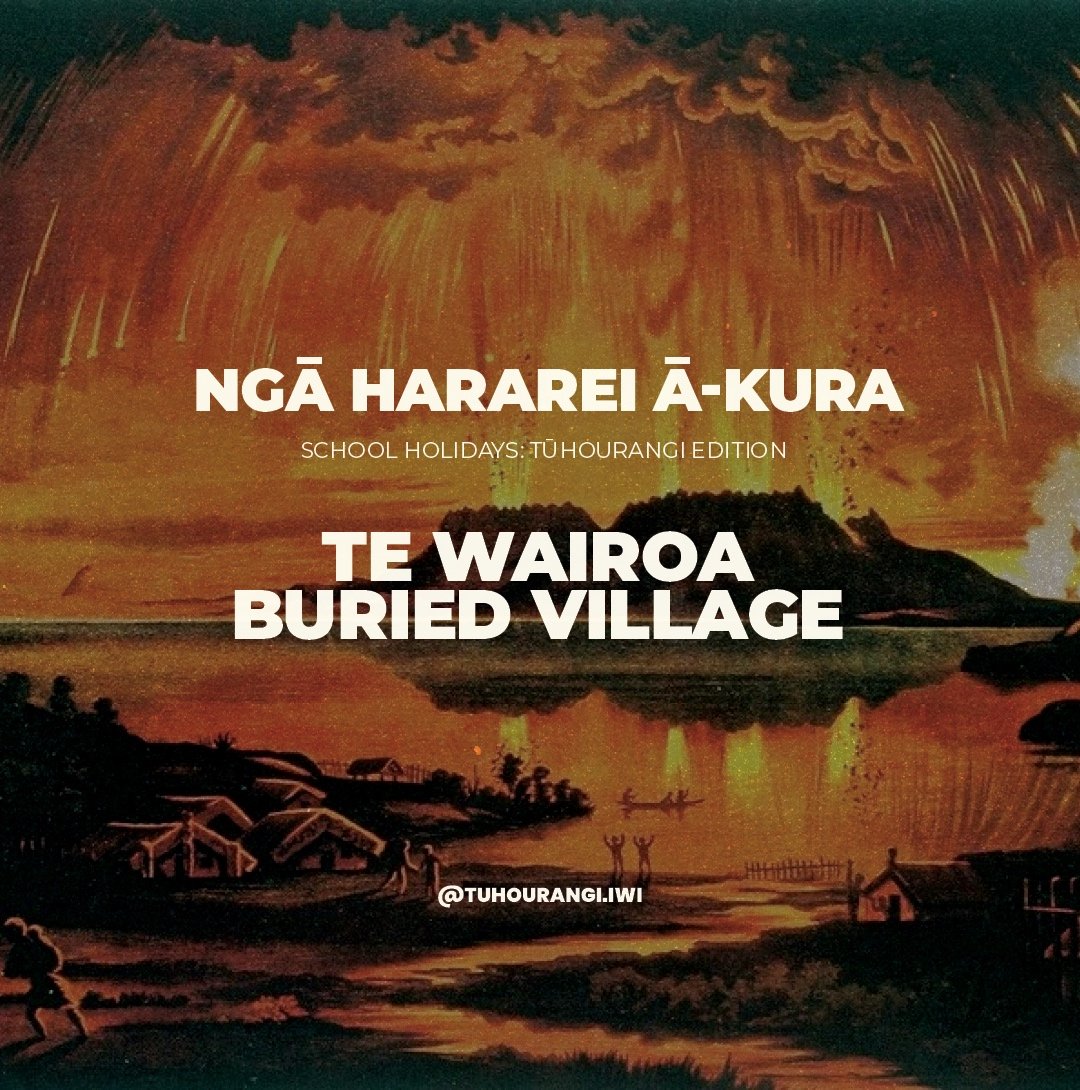
Tarawera Landing
On the western shores of Lake Tarawera, our tupuna would welcome manuhiri, taking them to Te Otukapuarangi – the Pink and White Terraces.
In February, Rotorua Lakes Council made an unanimous decision to seek to return the land under the café to mana whenua, Tūhourangi Ngāti Wahiao.
The draft improvements to enhance the area to lift the visitor experience, have been developed by a small development team.
This link takes you through to a draft design for Waitoharuru and Punaromia. We are seeking feedback from you on the designs before being shared with other stakeholders:
Once you have viewed the draft design, please click this link to provide your feedback:
Tarawera - Connecting People and Place
The Tarawera Lakes Collective Impact Project was developed to connect agencies and communities where groups, each with their own set of skills and experiences can work together for a common purpose.
The purpose being Lake Tarawera and its declining water quality. Lake Tarwera is one of the iconic Rotorua District Lakes with seven lakes contributing to the health of Lake Tarawera (Ōkataina, Ōkāreka, Tikitapu, Rotokakahi, Rotomahana, Ōkaro and Rerewhakaaitu).
Te Arawa Lakes Trust has been tasked with scoping out how collective impact might work – in practice – for the Tarawera Lakes System.
Working collectively is a way of bringing together and harnessing the collective potential and energy of passionate people which can build on existing work happening within the attachments and enable innovation and multiple benefits.
To view and read the information sheet – please click here.
Next steps:
To provide feedback on this important kaupapa – please click here. The online survey is a way to share your thoughts to guide the way forward.
Hui-ā-iwi: Update
The hui dealt with two matters:
1. Equity
Consistent with previous decisions the hui unanimously supported the continuation of TTA work to have this matter addressed and resolved:
a. That TTA engage with TPT to request them to take legal advice and steps to obtain a declaratory decision.
b. If those discussions are unsuccessful, TTA to consult with the iwi before taking any further action.
A copy of the FAQ sheet that was shared at the hui is included below.
2. The Ngati Rangitihi overlapping interests at Tarawera and Rotomahana.
In response to prior hui-a-iwi, TTA trustees were able to confirm:
- Ngati Rangitihi makes no claim for fee simple title or statutory acknowledgement over any Tuhourangi lands as awarded to them through the Native Land Court (Rotomahana Parekarangi 6 lands).
- In respect of the whenua rahui over the Tarawera maunga, through the Te Arawa Collective Settlement legislation, the Crown is able to provide a similar rahui to Ngati Rangitihi.
- The Waimangu fee simple titles over three parcels of land initially offered by the Crown to Ngati Rangitihi were withdrawn, these can only be included with the consent of Tuhourangi. TTA with the support of Ngati Rangitihi and via their settlement propose to take the opportunity for the return of this Waimangu land and another parcel which borders the lake where the Pink and White Terraces once were. Both are culturally significant Tuhourangi lands and part of Rotomahana Parekarangi 6.
Included below is a copy of the fact sheet distributed at the hui and includes the following meeting resolution:
The hui recommended that TTA work with Ngati Rangitihi to make the strongest case possible for the return of these culturally significant tribal lands.
FAQ’s Regarding Equity
What is equity?
Consider the scenario where two people enter into business, one invests $75 and the other $25. The equity and profit sharing is based on your contribution and NOT equal shares.
What is the background context to this question?
TTA have been working on understanding and trying to resolve equity within TPT for some time now.
Various consultants and contractors have been engaged by TPT to resolve this matter and these have included Willy Te Aho, OTS, Wira Gardner, Judge Hingston, and other contractors but to no avail.
In February this year Shane Gibbons was engaged by TPT to investigate and provide a report on the process and decisions taken that lead to the issue of equal shareholding of the settlement assets.
This report contains significant evidence and provides good cause for TTA to continue to pursue this matter as a priority.
What does equity mean to Tuhourangi?
We believe the settlement equity should be based on what each of the affiliates brought to the table by way of their claims e.g. as quantified by their respective land lost.
Tuhourangi lost 64,000 acres while some affiliates lost very little land and they share equally in the settlement.
What is Tuhourangi entitled to?
The Tuhourangi land loss has an estimated value of $533m.
What is Tuhourangi going to receive?
Based on the current equal shares allocated to all TPT affiliates Tuhourangi projected value at 2043 is $117m.
What level of satisfaction does this provide for the Tuhourangi claims?
Based on a land loss value of $533m and the current projected settlement value of $117m Tuhourangi level of satisfaction is only 22%.
Who are the other affiliates affected by this equity question?
Kea Tuara 76% satisfaction, and Tura Tu Ngakau 96% satisfaction.
How does that compare with other affiliates?
All but the three affiliates named above receive well in excess of their entitlement, as an example one affiliate based on their land loss value $6m will receive $73m making their level of satisfaction 1216%.
Another example is one iwi withdrew from the collective settlement but three of their hapu remained in the collective effectively they will achieve more than Tuhourangi (entitled to $48m and receiving $220m, level of satisfaction is 458%).
A similar analogy can be made where another iwi remained in the collective but split into three effectively getting three shares (entitlement $59m and receiving $249m, level of satisfaction is 422%).
What is the current appetite within TPT to review and or remedy this?
There is zero appetite for change.
Only Tuhourangi and possibly one other affiliate believe there is an issue the rest refuse to attend meetings, receive reports or discuss the issue and possible solutions.
What is the current basis for distribution of the settlement assets?
The cash surplus was used to float TAGH for which there are equal shares issued to all affiliates.
All income from the settlement assets including CNI forest rentals, school property rentals are assigned to TAGH and by default are shared equally.
The policy for the devolution of the CNI forest lands has NOT been determined but the assumption being promoted by most is these will be returned to the mana whenua.
What options are there to resolve the equity issue?
Recalculate the sharing model to fairly reflect the affiliates input/claim value.
Leave the TAGH shareholding as is and allocate the rental streams only to those affiliates whose level of satisfaction is below 100%.
Allocate the CNI lands only to those affiliates where the level of satisfaction is below 100%.
This option would still be short for Tuhourangi ($353m) but is better than the current $117m.
How is the TTA settlement value made up?
TTA has an equal share in TAGH which at 2018 had a value of $9m, (The annual dividend return is $100k per anum).
TTA mana whenua in the CNI forest includes Whaka, Waimangu, Highlands, Paeroa East but the devolution of these lands is still to be agreed at TPT.
TTA also received 5 cultural redress properties, Punaromia, Rotomahana, Kakapiko, Moerangi, and a half share in Te Ariki.
Are there any other areas of the settlement that need to be resolved?
The TPT research and subsequent award of the Waiotapu cultural redress property to Tahu Whaoa was totally inadequate and ignores the fact that Tuhourangi mana whenua entitles Tuhourangi to an estimated half share. (This includes the Thermal Valley tourist attraction.)
TPT took up the first right of purchase of a farm block at Horohoro, Tuhourangi did not receive the opportunity to purchase this, nor did the whanau. The right was given to TAGH who simply on sold it for a profit of $1m.
Are there any other issues that arise from the inequitable settlement?
Such is the inequitable and prejudicial nature of our settlement Tuhourangi has had to try and enhance its position by other means including:
- Having Te Puia assist fund the TTA 50% share in the purchase of Waimangu Valley tourism business.
- Having to consider using the Ngati Rangitihi settlement to secure the return of further mana whenua.
- TTA having limited capacity to provide social outcomes to our iwi.
What is being proposed?
The hui resolved to support:
- That TTA engage with TPT to request them to seek legal advice and take steps to obtain a declaratory decision.
- If those discussions are unsuccessful, TTA to consult with the iwi before taking any further action.
NB. The resolution was carried by a unanimous vote.
FAQ’s Regarding the Ngati Rangitihi Overlapping Interests at Tarawera and Rotomahana
What land is Ngati Rangitihi (NR) claiming in respect to Tarawera and Rotomahana?
Their claim includes 16 separate parcels of land that are located in the Ruawahia block.
Who did the Native Land Court award the Ruawahia block to?
Ngati Rangitihi were awarded the Ruawahia block but they were also the Rotomahana Parekarangi 5 and Rerewhakaitu blocks, all in the Tarawera Rotomahana area.
Are NR claiming any land interests on Tuhourangi side of the boundary?
No, but NR have offered, entirely at the perogative of Tuhourangi, to have two statutory acknowledgements on Parekarangi 6 blocks to be assigned to Tuhourangi by way of the NR settlement. These blocks have been offered to NR by the crown however if Tuhourangi were to decide not to avail themselves of this offer NR will ask for these to be removed from their settlement.
Does Tuhourangi have any land on the NR side of the boundary?
Yes we do, as a result of our settlement Tuhourangi was given a whenua rahui reserve status over the northern side of the maunga. The Crown plan to provide NR with a similar rahui over the same block which we initially disputed however our settlement legislation provides for the Crown to do this.
What lands were Tuhourangi awarded by the Native Land?
Tuhourangi area of interests is extends from Putauaki to Tauhara however from actual lands claimed via the NLC Tuhouangi were principally awarded Rotomahana Parekarangi 6 blocks, from Tarawera Rotomahana through to the Waikato river. This included the disputed land at Te Ariki and Rotomahana.
Where are these blocks?
Parekarangi 6 borders Ruawahia through the middle of Lake Tarawera. Parekarangi 6 borders Parekarangi 5 at Rotomahana. (See the map attached app.1)
Did Tuhourangi and Ngati Rangitihi live together at Tarawera and was it a peaceful existence?
Yes, generally it was peaceful and we did fight together against all other threats. But we did fight each other over Te Ariki, and the Pink and White Terraces where battles over a number of years saw people on both sides killed. There remains strong whakapapa connections with NR.
Who won?
Eventually peace was made and Tuhourangi retained their mana at Te Ariki and the Terraces. The land was eventually taken by the Crown post the Tarawera eruption.
What is the opportunity for Tuhourangi to get more land returned?
Virtually nil, as Tuhourangi settled all their claims in 2008 as part of the Te Arawa collective (TPT) and that was accepted as full and final and the legislation prevents Tuhourangi revisiting those historical claims.
But currently two options present for this to happen:
• We can, through the NR settlement process, have more lands returned, NR are happy to facilitate this and the Crown are prepared to assist iwi to enable this to happen. We have identified two areas that are culturally significant to us. One block is the Waimangu Volcanic Valley 134ha that our business currently leases from DOC and the other is an adjacent block along the Rotomahana lake shore called Otukapuarangi 40ha (this is where the Pink and White Terraces were).
• Alternatively, we could take a contemporary claim via the Tribunal and or the High Court. The outcome would likely NOT include vast tracks of land being returned but limited to the likes of Otukapuarangi.
What would the arrangement be for NR to enable this to occur?
In appreciation for assisting with the return of Otukapuarangi in sole fee simple title to Tuhourangi we would share 50/50 an undivided fee simple title in the Waimangu Volcanic Valley, noting that we are currently joint owners with NR in that business.
NR have acknowledged Tuhourangi via their TPT collective settlement may raise a contemporary claim, they respect our perogative, but require that this has no impact for the matters in their AIP.
Were other options considered?
The expectation of having the Crown realign the NLC awards with our historical mana whenua view is unrealistic.
The expectation of having a successful contemporary claim has significant cost and risk for minimal reward.
The return of various larger blocks was investigated but considered less likely to succeed.
This proposition still requires Crown approval and we will work with NR to make the strongest possible case.
What benefits would this proposition have for Tuhourangi?
• Provides the last chance for the return of more of our tribal lands.
• Has both significant cultural and financial benefits.
• Financial benefits to the iwi via our joint venture tourism operation at Waimangu where lease costs, currently being paid to DOC, would be paid to the iwi.
• Better enables the iwi to provide social outcomes.
• Avoids any litigation costs.
• Presents the opportunity to strengthen inter-iwi relationships and establishes a model of collaboration for iwi moving into the future.
• This proposition ensures both iwi can uphold their respective historical mana whenua views.
• Consistent with the peace made in 1850 after the Te Ariki disputes.
What is the recommendation to the Tuhourangi Tribal Authority?
TTA trustees believe this to be a fair landing for both iwi with significant cultural and financial justification that will enable us both to be future focused.
The hui recommended that TTA work with Ngati Rangitihi to make the strongest case possible for the return of these culturally significant tribal lands.
NB. The resolution was carried by a majority vote.


